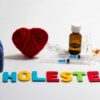By the year 2000, measles was virtually eliminated from the United States, thanks to widespread vaccination. Now the disease, which once caused nearly 500 deaths annually and tens of thousands of cases of lingering brain damage, is back. In 2018, 17 measles outbreaks, affecting almost 400 individuals, were reported in the United States. As of March 7, 228 measles cases have been reported in 12 states so far this year.
Other vaccine-preventable diseases, including pertussis (“whooping cough”) and hepatitis A, are also on the upswing, and experts say that persistent myths regarding the safety and efficacy of vaccines contribute to declining vaccination rates and disease outbreaks. However, parental fears and concerns regarding vaccines are entirely normal, according to Daniel Salmon, PhD, director of Johns Hopkins Bloomberg School of Public Health’s Institute for Vaccine Safety.
“People are afraid of what they see,” Salmon says. “When a disease is prevalent, it’s feared. Take the polio virus: When it was around, people really feared it.” Today, polio, measles, whooping cough and other immunization-preventable diseases are rare. Parents are more familiar with vaccines’ alleged scary side effects than the life- and health-threatening complications of the diseases they are designed to prevent.
Here, we unpack six common vaccine myths:
Browse This Article
Myth #1: Vaccines cause autism
A since-debunked 1997 study published in the The Lancet, a prestigious British medical journal, was the first to highlight a possible link between vaccination and increasing autism rates. That study has been discredited (and its author lost his medical license), but fear of vaccine-induced autism remains — which makes sense, Salmon says, because today’s parents have seen families affected by autism and are afraid to do anything that might trigger the condition.
But evidence suggests that autism likely has a genetic basis, and more than 13 rigorous scientific studies have shown no relationship between vaccination and autism. The latest, a Danish study that followed more than 657,000 children for more than a decade, found no increased risk for autism after MMR (measles/mumps/rubella) vaccination – not even in children at increased risk of autism.
Myth #2: Vaccines cause the very diseases they’re supposed to prevent
Vaccines trigger immunity by exposing the body to the germs that cause disease. Most vaccines given today do not contain any live germs and can’t cause disease. They actually elicit a weaker response from the immune system compared with vaccines that use live, though weakened, virus. The few that contain live viruses or bacteria – such as the chickenpox and MMR vaccines – cause disease on rare occasions, but the resulting infection is usually mild. Choosing to forego vaccination and potentially getting chickenpox or measles, mumps or rubella poses far more risks than a vaccination.
When researchers developed the polio vaccine, they included a tiny amount of live polio virus so the body would mount an immune response. The resulting oral polio vaccine was highly effective, but it also caused polio in a very small number of healthy children. Approximately one in 750,000 children who received the live polio vaccine developed polio. And approximately five to seven children developed vaccine-associated paralytic polio.
“At the time, it was considered a small price to pay for preventing polio,” Dr. Salmon says, noting that polio caused about 15,000 cases of paralysis before widespread vaccination. Once the disease was mostly eliminated, healthcare providers switched to an inactivated polio vaccine. This vaccine does not contain any live virus, so it cannot cause disease.
Myth #3: The preservatives in some vaccines are dangerous
Some people claim that substances added to vaccines to increase their effectiveness and keep them safe and stable may cause harm in the human body. Thimerosal, a mercury-based preservative; formaldehyde, a common chemical compound best known as a preservative agent for frogs awaiting lab dissection; and aluminum, the world’s most abundant metal, are three vaccine ingredients that have come under scrutiny. However, there’s no evidence that any of these substances causes harm when administered as part of a vaccine.
“A poison is in the dose,” Dr. Salmon explains. “Most substances – including water – are toxic in certain amounts but not in others.” The amounts of aluminum, formaldehyde and thimerosal in vaccines are far less than children are exposed to in daily living. “The levels of formaldehyde in our bloodstream are far greater than you ever get in a vaccine,” says Paul Offit, MD, director of the Vaccine Education Center at Children’s Hospital of Philadelphia.
Despite multiple studies demonstrating its safety, thimerosal was removed from all childhood vaccines in 2001. The only vaccine that still contains thimerosal is influenza vaccine that comes in multi-dose vials. Influenza vaccines that do not contain thimerosal are also available.
Myth #5: Natural immunity is better than vaccine-induced immunity
This statement is true. Generally speaking, the immunity that results from disease is stronger and longer-lasting than vaccine-induced immunity.
“If you get measles and you survive, you’re 100% protected from future measles infection. Ninety-seven percent of people who get two doses of the measles vaccine, as recommended, will be protected against measles if they’re exposed,” Dr. Salmon says. The problem with natural immunity is that it’s a bit of a gamble: You’ll be protected from the disease if you survive. And of those who survive, a not-insubstantial number must cope with life-altering complications. These include pneumonia and encephalitis (brain swelling).
In every case, “the benefits of vaccination outweigh the risks. You’re better off getting the routinely recommended vaccines,” Dr. Salmon says.
Myth #6: My child doesn’t need to be vaccinated because other children are
The more people who are immunized in a community, the lower the risk of infection. This is what is known as herd immunity. However, you can’t count on widespread vaccination to protect your child as there can be children who aren’t immunized.
“Vaccines are not 100% effective. The measles vaccine is about 95 to 97% effective, which is good, but it’s not perfect. About one in 20 children who receive the measles vaccine will still be susceptible,” Dr. Offit says. Vaccinated children can and occasionally do get measles, and when they do, unvaccinated children are at extremely high risk of contracting the disease.
Recent outbreaks across the country also indicate that unvaccinated children can allow a disease to spread quickly. In New York City, for example, there have been 158 measles cases in children since October, and that number is rising. Most of those cases are in ultra-Orthodox Jewish communities in Brooklyn where some parents reject vaccinations. And a recent story in The New York Times highlighted how an Oregon boy unvaccinated for tetanus nearly died and rang up $800,000 in hospital bills, not to mention putting classmates who were also unvaccinated at risk.







